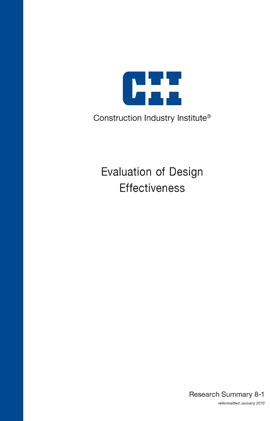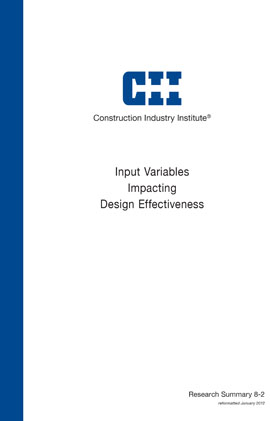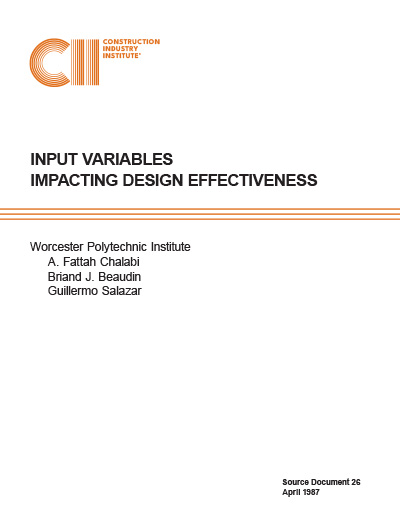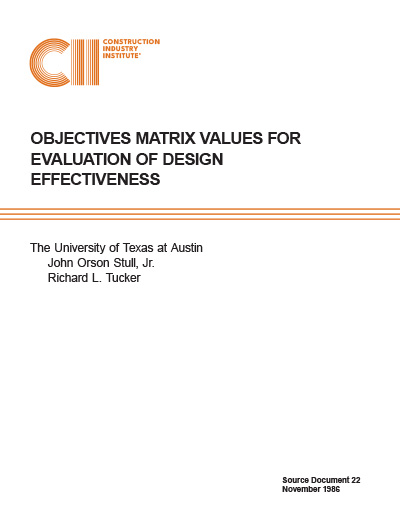
Evaluation of Design Effectiveness
Design is basically a subjective process which is influenced by many factors. Nonetheless it provides a project’s central point of translation of ideas into specific instructions.
This publication is the first of several relating to the design function. The purpose is to present a method for evaluating design effectiveness. Subsequent publications will provide additional data for use in such evaluations as well as information relating to the factors that influence the design process.
The method presented herein is for evaluation of a design, not a designer. It is recognized that many parties and factors influence the final design product. The proposed method is based upon the following seven evaluation criteria:
- Accuracy of Design Documents
- Usability of Design Documents
- Cost of Design
- Constructability
- Economy of Design
- Performance Against Schedule
- Ease of Start-Up
Not all of the criteria influence a design to the same degree. A method is presented for combining weights and performance ratings of the seven criteria into a single performance index. The method utilizes an objectives matrix approach and provides the flexibility of using a variety of criteria, weights, and measuring systems to compute the performance index. An example is shown, using piping design, for calculating the performance index.
The method has the flexibility to be useful in a wide variety of circumstances, including:
- Widely differing types of products
- Mixtures of objective and subjective measurements of design effectiveness
- Differing objectives and criteria for design effectiveness
- Measurement of overall design effective regardless of influence source or measurement of designer performance when influences of designer and owner can be separately identified.
The ability to measure design effectiveness using the proposed method represents an important step in a broader effort to improve the total design process. Such a broader effort encompasses identification of the effect on design effectiveness of (a) various inputs to the design process and (b) the systems and techniques employed by the designer.
The research identified the following seven criteria as most suited for an initial evaluation of design effectiveness. These criteria can be evaluated both during and after completion of project construction, but before the project team disperses. Detailed discussions for each of these criteria are included in the research. The seven criteria are further developed as a “Design Evaluation Matrix” where scores and weights for each criteria may be provided by the project team to create an overall design performance value. The Design Evaluation Matrix can be used for any project type or area of a project. (RS8-1, p. 5)
- Accuracy of Design Documents
- Usability of Design Documents
- Cost of Design
- Constructability
- Economy of Design
- Performance against Schedule
- Ease of Start-Up
This research indicates that projects may be divided into seven phases:
- The Conceptual/Preliminary Analysis
- Project Initiation and Organization
- Basic Engineering
- Detail Planning
- Production Engineering and Procurement
- Construction
- Commissioning
Input variables occur in the first five phases, but those having a major influence occur primarily during Phases I and II.
Source Documents SD-16 and SD-22 provide supporting research details for Key Finding #1.
This evaluation matrix is a composite indicator of total performance during a measurement period(s). It can be used to track and compare performance over time, including trends while design is in progress. An example of the use of this matrix is included in the research material. (RS8-1, p. 9)



